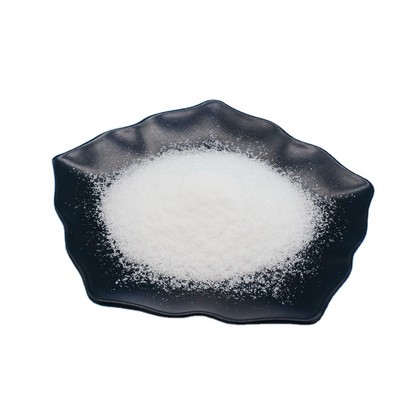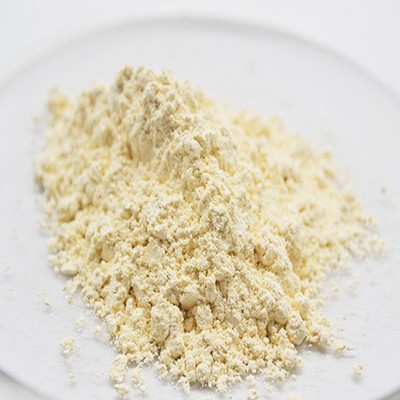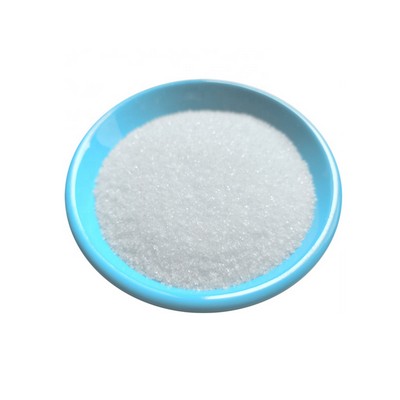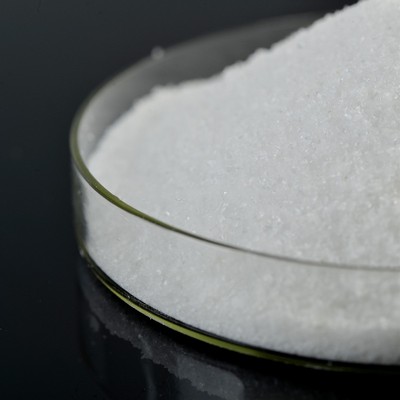Studies on Water Absorbency of Polyacrylamide Hydrogels
of synthetic conditions and water content on rheological properties of polyacrylamide hydrogels were studied. The non-Newtonian flow curves of polyacrylamide hydrogels were obtained by using a
Here we apply ultrafast two-dimensional infrared (2D IR) vibrational echo and polarization-selective pump–probe (PSPP) spectroscopies to investigate the ultrafast molecular dynamics of water and a small molecular anion solute, selenocyanate (SeCN–), in polyacrylamide hydrogels.

Preparation of polyacrylamide hydrogels at various charge
In this study, first polyacrylamide hydrogels were synthesized by free‐radical crosslinking polymerization of acrylamide monomer with N,N ′‐methylenebis(acrylamide) as a crosslinker in an aqueous solution at 22°C.Then, a series of hydrogels at various charge densities were prepared by partial hydrolysis of polyacrylamide precursors in a 0.1M sodium hydroxide solution at 60°C.
Get Price
Temperature, pH and electric stimulus responsive hydrogels
Swelling studies in deionized water A known amount of the dried hydrogel (W d) was immersed in 100ml of deionized water. After a regular time interval sample was taken out of the water and excess water on the surface of the swelled hydrogel was removed with the help of tissue paper very carefully. Weight of the
Get Price
Synthesis of poly(acrylamide-co-acrylic acid)-based super
of the studies report AAm concentration in very low ranges. The equilibrium water absorbency of the hydrogels was investigated in distilled water at different temperatures and saline water. The effect of the synthesized co-polymer on growth of seeds of lady nger has also been studied. The percentages of nitrogen content
Get Price
Mechanical Properties of the Stretchable Polyacrylamide
Hydrogels are hydrophilic polymer built-up of polymeric network crosslinking structure. They have unique properties that allow for water absorption until 90 % of their own body mass [1]. Hydrogels have a high water attraction, but are insoluble in it due to the chemical or physical bonds produced between the polymer chains.
Get Price
Study of the properties of hydrolyzed polyacrylamide
Fully swollen cryogels exhibited a microphase separation between the mechanically squeezable water and the polymeric hydrogel phase, which absorbed the remaining water in the bulk gels. The mechanically squeezable water phase was a pure water phase without any polymer, whereas the hydrogel phase contained both polymer and water.
Get Price
Casein Cross-linked Polyacrylamide Hydrogels: Study
The polymeric hydrogels composed of polyacrylamide and food protein casein have been synthesized for the purpose of studying their swelling and drug release behaviour. The two samples, differing in cross-linking ratio, show almost Fickian swelling behaviour (n50.50) except the less cross-linked sample at pH 7.0 for which swelling exponent n was 0.62, thus showing non-Fickian swelling behaviour.
Get Price
Water Absorbency Studies of γ-Radiation Crosslinked Poly
The hydrogels, the semi-interpenetrating polymer networks, and the hybrid composite hydrogel systems that were synthesized in this study have shown high water absorbency.
Get Price
Molecular Dynamics Study of Polymer−Water Interaction
Computer Simulation Studies on the Polymer-Induced Modification of Water Properties in Polyacrylamide Hydrogels. The Journal of Physical Chemistry B 1998 , 102 (25) , 4875-4886.
Get Price
Mechanical Properties of the Stretchable Polyacrylamide
Another research conducted by Nakayama also proposed similar idea of producing DN hydrogels [6]. The stiff and brittle first network was combined with soft and ductile second network [14]. From both of these studies, the elastic modulus [6], tensile strength, hardness and also its toughness was investigated [5].
Get Price
One-pot synthesis of superabsorbent hybrid hydrogels based
This study provides effortless one-pot synthesis of hybrid hydrogels based on covalently linked GELMA and polyacrylamide (PAA), using photo-induced network-forming polymerization. Conventional synthesis of similar hydrogels leads to interpenetrating gelatin and PAA networks, usually involving multistep crosslinking of the components and the use
Get Price
Water Absorbency Properties of OPEFB Filled Hydrogels
Water absorbency capacity of hydrogel T1 is 42.90 gram/gram (g/g) and hydrogel T2 is 39.96 g/g. WAC of hydrogel T2 has much better re-swelling ability compared to T1 after it went through five cycles of drying-swelling-drying process. Hence, T2 has produced a hydrogel composite that is reusable with great morphology properties.
Get Price
Hydrogels - 2010 - Wiley Analytical Science
Hydrogels are water swollen, cross-linked polymeric structures, produced by the simple reaction of one or more monomers or by association of bonds such as hydrogen bonds and strong van der Waals interactions between chains. A large amount of today's research is focused on probably the most interesting among them, the so-called "smart" hydrogels.
Get Price
Water absorption, retention and the swelling
J.R. Witono et al. / Carbohydrate Polymers 103 (2014) 325–332 327 simplification of Eq. (2), in the form of an empirical power law equation: Mt M∞ = ktn (3) where Mt is the mass of water absorbed at time t, M∞ is the mass of water absorbed at equilibrium, k is a characteristic constant of the
Get Price
Superabsorbant Hydrogels: A Study of the Most Effective
Amazingly, hydrogels can absorb up to 500 times their weight in water, and when their surroundings begin to dry out, the hydrogels, or cross-linked polyacrylamide polymers (PAM), gradually dispense up to 95% of their stored water.
Get Price
Polyacrylamide-Phytic Acid-Polydopamine Conducting Porous
As shown in Fig. S3, the equilibrium absorption capacities are decreased from 1008.65 to 298.64 mg g −1 for NR, 393.25 to 168.82 mg g −1 for MB, 810.67 to 251.30 mg g −1 for MV and 553.37 to
Get Price
Water absorption, retention and the swelling
J.R. Witono et al. / Carbohydrate Polymers 103 (2014) 325–332 327 simplification of Eq. (2), in the form of an empirical power law equation: Mt M∞ = ktn (3) where Mt is the mass of water absorbed at time t, M∞ is the mass of water absorbed at equilibrium, k is a characteristic constant of the
Get Price
Hydrogel applications for adsorption of contaminants
During the last decade, hydrogels have been used as potential adsorbents for removal of contaminants from aqueous solution. To improve the adsorption efficiency, there are numerous different particles that can be chosen to encapsulate into hydrogels and each particle has their respective advantages. Depending on the type of pollutants and approaching method, the particles will be used to
Get Price
Journal of Macromolecular Science, Part B
(2008). Gelation and Swelling Behavior of Semi-Interpenetrating Polymer Network Hydrogels Based on Polyacrylamide and Poly(vinyl alcohol) Journal of Macromolecular Science, Part B: Vol. 47, No. 5, pp. 1017-1027.
Get Price
Porous Gelatin Hydrogels: 2. In Vitro Cell Interaction Study
We report on the feasibility of applying porous gelatin hydrogels, prepared by a novel and controlled cryogenic treatment, as cell-interactive scaffolds for tissue engineering applications. Despite the large number of publications on gelatin as a biomaterial, a detailed study of screening a limited number of gelatin scaffolds for their interaction with a panel of human cells has, to the best
Get Price
Water Dynamics in Polyacrylamide Hydrogels(Journal Article
In this study, we apply ultrafast infrared two-dimensional infrared (2D IR) vibrational echo and polarization-selective pump-probe (PSPP) spectroscopies to investigate the ultrafast molecular dynamics of water and a small molecular anion solute, selenocyanate (SeCN -), in polyacrylamide hydrogels.
Get Price
Journal of Macromolecular Science, Part B
Novel semi-Interpenetrating Polymer Network (semi-IPN) hydrogels based on partially Hydrolyzed Polyacrylamide (HPAM) and Poly(Vinyl Alcohol) (PVA) were prepared by solution crosslinking using chromium triacetate. Effects of PVA content on the gelation process and swelling behavior in tap water and different electrolyte solutions were investigated.
Get Price
Thermo-responsive gels that absorb moisture and ooze water
Thermo-responsive behaviors of hydrogels and dried gels. a Relationship between temperature and normalized water content of PNIPAAm hydrogel, P(NIPAAm-co-AAcNa) hydrogels with an AAcNa content of
Get Price
Study on the properties of copolymer hydrogel obtained
maximum at the radiation dose of 30 kGy. Swelling ratio and equilibrium water content decrease with increased radiation dose and concentration of HEMA in feed solution. The water absorption of hydrogel increases with increased standing time in swelling medium. It is fast up to 24 h and then it becomes slow.
Get Price
Swelling Characterization of Nanocomposite Hydrogels
Swelling experiments were performed in water at 25°C, gravimetrically. Here, it was of interest to increase the water absorption capacity of AAm hydrogels with add VI. AAm is a highly hydrophilic monomer, and VI monomer is neutral. The one purpose of this study is to combine both monomers in one polymer.
Get Price
Hydrogel applications for adsorption of contaminants
During the last decade, hydrogels have been used as potential adsorbents for removal of contaminants from aqueous solution. To improve the adsorption efficiency, there are numerous different particles that can be chosen to encapsulate into hydrogels and each particle has their respective advantages. Depending on the type of pollutants and approaching method, the particles will be used to
Get Price
Hydrogels for Biomedical Applications: Their
2. Different Kinds of Stimuli-Responsive Hydrogels. Defined by Peppas [], “hydrogels are hydrophilic, three-dimension networks, which are able to imbibe large amounts of water or biological fluids, and thus resemble, to a large extent, a biological tissue”.They are insoluble in any solvent due to the polymer chains being crosslinked by either covalent bonds or physical interactions such as
Get Price- Is polyaluminum chloride a good coagulant for water treatment?
- Polyaluminum chloride (PAC) is highly effective coagulant for water treatment over conventional coagulants because of low dosage requirement, shorter flocculation time, smaller amount of sludge, high efficiency and low aluminum residual in treated water [ 6 ].
- What is polyaluminum chloride (PAC)?
- Polyaluminum chloride (PAC) is a classic inorganic polymer material, which has the advantages of easy preparation, low cost, and high efficiency in the field of water treatment and other areas of environmental protection [ 1, 2 ].
- Does polyaluminium chloride coagulate with non-prehydrolysed aluminium salts?
- Although the mechanism of coagulation with non-prehydrolysed and prehydrolysed aluminium salts is the same, the presence of polymeric forms of aluminium in polyaluminium chloride solutions makes them more stable in water, providing more effective removal of impurities and lower concentrations of aluminium remaining in the treated water.
- What is polyaluminium chloride production?
- PolyAluminium Chloride production is one of the most exigent process for glass-lined equipement due to its high corrosive and abrasive effect. That's why, the experience and the qualification of De Dietrich Process Systems allow to meet qualitatively those process requirements.








